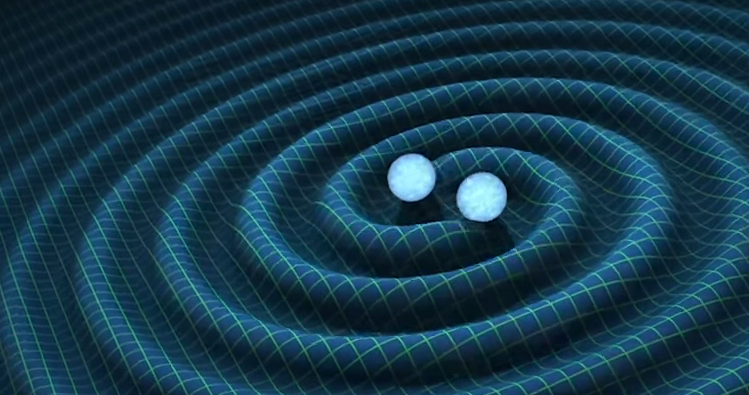Einstein Proved Right: Gravitational Waves Detected for First Time by LIGO Scientists

In a monumental finding that shakes up the world of physics, researchers have detected gravitational waves, which Albert Einstein theorized a century ago. But until now, it wasn’t possible to detect such a phenomenon.
The Laser Interferometer Gravitational-Wave Observatory detected the waves. The observatory has two detectors, one in Livingston, Louisiana, and the other in Hanford, Washington. “Ladies and gentlemen, we have detected gravitational waves—we did it,” said David Reitze, LIGO lab executive director, in a news conference in Washington, D.C.
Gravitational waves are basically ripples in the fabric of space-time, like waves created by a rock being thrown into a pond. They are generated by massive objects moving throughout the cosmos, and in this instance the waves were created when two black holes collided.
Gravitational waves have been likened to waves of sound, as both phenomena compress and stretch space as they move throughout a medium. And indeed, LIGO has converted the waves the observatory measured into sounds, as a way to better conceive of the waves.
“It’s the first time the universe has spoken to us in the form of gravitational waves,” Reitze said.
LIGO detected the waves using two long tools in which lasers are bounced back and forth from mirror to mirror. The waves created by the merging black holes took 1.3 billion years to reach Earth. When they did, they created an identical perturbation of the laser beams at the widely separated detectors, said Gabriela González, LIGO spokeswoman and researcher Louisiana State University. Further analysis of the perturbation told the researchers more about the event that created it, such as the mass of the objects that collided, how much energy was expelled and how long ago this all took place.
The finding also proves for the first time the existence of binary black holes, which orbited each other before colliding and merging into one. This merger created an enormous blast of energy, in the force of a wave, that propagated throughout the universe, Reitze said.
“Take something that’s 150 kilometers [93 miles] in diameter, which is much bigger than the Washington, D.C., area—that’s half the mass of the sun—and then accelerate it at half the speed of light,” said Reitze, describing the black hole and its movement prior to merging. “Then take another object of the same size and accelerate it at the same speed,” and then slam the two into each other, he continued. And with that, you get the gravitational wave that the LIGO detectors picked up.
The amount of energy expelled in the merger of the black holes, described as a “storm in the fabric of space-time,” was absolutely astronomical, equal to “50 times the power of all the stars of the universe put together,” said Kip Thorne, with LIGO and CalTech.
"The event horizons [or exteriors] of black holes provide surfaces that are fixed boundaries, with no spatial distribution of matter outside.... This makes the inference of black hole mergers as sources of the waves, and precise diagnostics on the masses of the two black holes, possible," said professor Matthew Baring, a Rice University physicist who wasn’t involved in the work, in a press release. The waves “seal the deal for Einstein's theory of gravity, which has proven robust in every other way,” Baring added.
Reitze praised the National Science Foundation for helping to fund the research, saying it took a “huge risk” in doing so, given that the finding was never guaranteed. “This [was] truly a scientific moon shot, and we landed on the moon,” Reitze said.
González added that the LIGO detector will allow researchers to find more gravitational waves in the future, and thus to better understand the universe. Now that is has been proven that one wave could be detected, others will certainly follow. “We can now listen to the gravitational waves of the universe,” she said.
Related Articles


